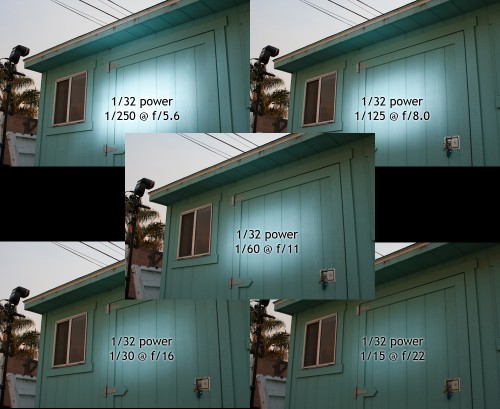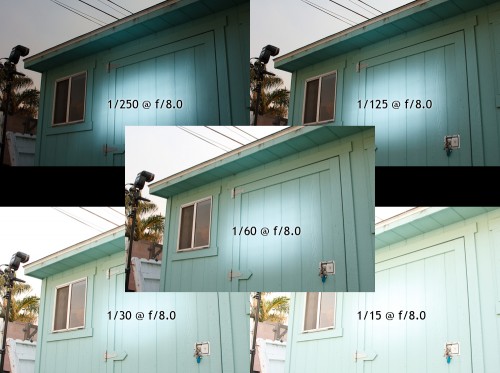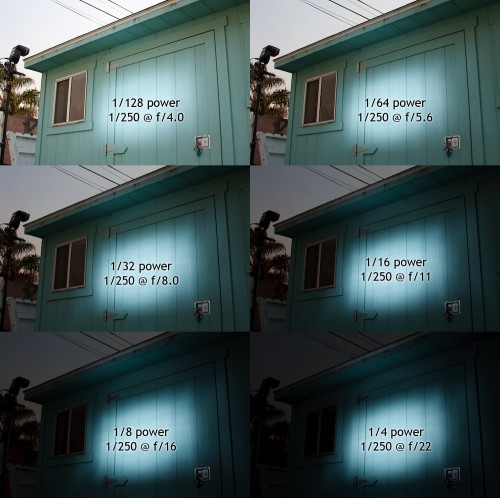In part one, I demonstrated how to add light to reduce the overall dynamic range of a scene. In this part, I’ll try and demonstrate how aperture and shutter speed combine to control exposure of the ambient light and light from the strobe.
In the shots above, aperture and shutter speed combine to control the exposure. This is fairly common sense. A wider aperture allows more light to reach the sensor (or film) and a narrower aperture allows less light. The longer the shutter is allowed to remain open, the greater amount of light is allowed in and conversely the shorter the shutter speed, the amount of light is restricted. By adjusting both you can maintain the amount of ambient light but notice how the light from the flash changes.
In flash photography, while the aperture still controls the total amount of light coming in, the light of the flash is largely unaffected by the speed of the shutter.
You can see in the image above that as long as the aperture remains constant when the shutter speed is increased (or decreased) the area that is lit by the flash also remains constant. Once you have your shutter speed set to the amount of ambient that you want, you can then adjust the amount of flash, as in the first set of photos, by keeping the ratio of shutter speed to aperture constant.
Finally, in the last set of photos, I wanted to demonstrate how to control the amount of ambient light and maintain the brightness of the light from the strobe while keeping the shutter speed constant.
DSLRs also give you the option of changing the ISO which gives you a forth dimension to use to control the light in your photographs. Remembering this can really save if you reach your limits of sync speed, flash power and aperture.
Please let me know if these tips were helpful, confusing, or a complete waste of time, by leaving a comment. Thanks!



